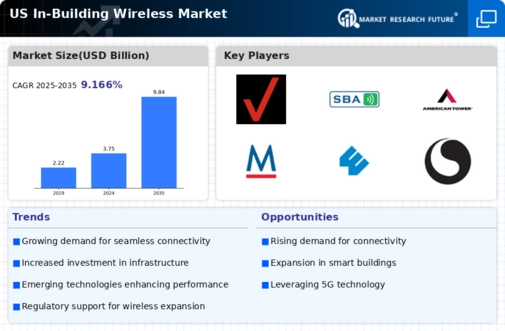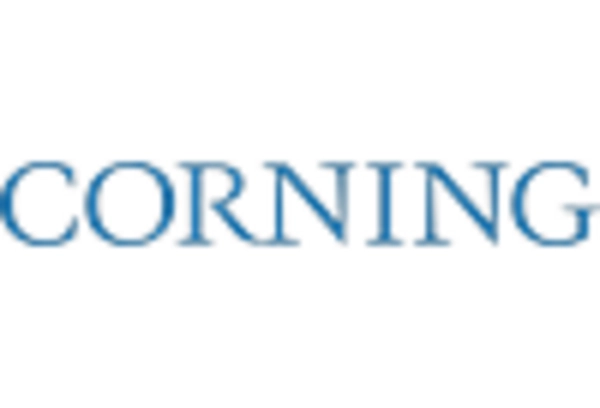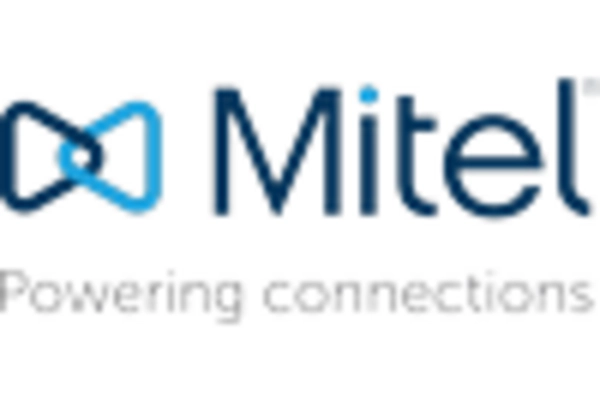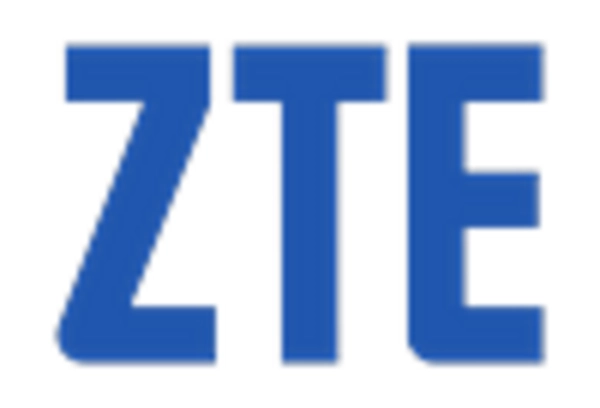Expansion of 5G Networks
The rollout of 5G networks is poised to transform the in building-wireless market. With its promise of ultra-fast data speeds and low latency, 5G technology is expected to enhance wireless connectivity within buildings significantly. By 2025, it is projected that 5G subscriptions in the US will surpass 200 million, driving demand for in building-wireless solutions that can leverage this advanced network. The in building-wireless market stands to benefit as enterprises seek to upgrade their infrastructure to accommodate the capabilities of 5G, enabling seamless connectivity for various applications, including augmented reality and real-time data analytics.
Shift Towards Flexible Workspaces
The shift towards flexible workspaces is significantly influencing the in building-wireless market. As companies adopt hybrid work models, the need for reliable wireless connectivity becomes paramount. In 2025, it is estimated that over 70% of organizations in the US will implement flexible workspace strategies, necessitating robust wireless infrastructure. This transition indicates a growing reliance on wireless solutions to support diverse work environments, from open offices to collaborative spaces. Consequently, the in building-wireless market is likely to expand as businesses invest in adaptable wireless technologies that cater to the evolving needs of their workforce.
Increased Focus on Employee Productivity
Organizations are increasingly recognizing the impact of wireless connectivity on employee productivity, which serves as a key driver for the in building-wireless market. Studies indicate that improved wireless access can enhance collaboration and communication among employees, leading to higher efficiency. In 2025, it is anticipated that companies will invest over $10 billion in wireless infrastructure to support flexible work environments and remote collaboration tools. This trend suggests that the in building-wireless market will continue to grow as businesses prioritize investments in wireless solutions that facilitate a productive workplace.
Growing Demand for Enhanced Security Solutions
The in building-wireless market is also being driven by the rising demand for enhanced security solutions within buildings. As security concerns escalate, organizations are increasingly investing in wireless surveillance systems and access control technologies. The market for wireless security solutions is projected to reach $15 billion by 2025, indicating a robust growth trajectory. This trend highlights the importance of integrating advanced wireless technologies into security frameworks, thereby propelling the in building-wireless market forward as businesses seek to protect their assets and ensure the safety of their premises.
Rising Adoption of Smart Building Technologies
The in building-wireless market is experiencing a notable surge due to the increasing adoption of smart building technologies. As organizations strive to enhance operational efficiency and reduce energy consumption, the integration of wireless solutions becomes essential. In 2025, it is estimated that the smart building market in the US will reach approximately $80 billion, with a significant portion allocated to wireless infrastructure. This trend indicates a growing recognition of the benefits of wireless connectivity in managing building systems, such as lighting, HVAC, and security. Consequently, the in building-wireless market is likely to witness substantial growth as businesses invest in advanced wireless solutions to support their smart building initiatives.

















Leave a Comment